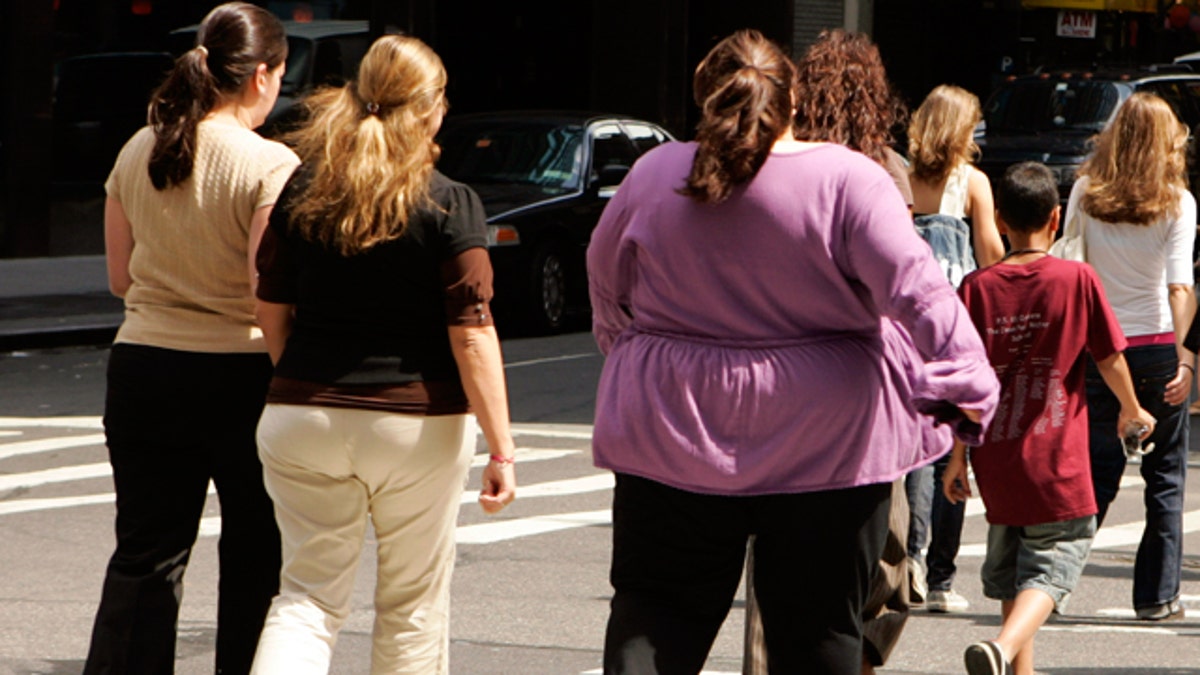
Our nation's cities appear to be fat, according to a new Gallup-Healthways poll, which found that at least 15 percent of residents in 187 of the 190 metro areas surveyed are obese.
Boulder, Colo., came out on top as the skinniest city, with just 12.1 percent of residents considered obese, while the number of obese in the fattest metro area, McAllen-Edinburg-Mission, Texas, soared to 38.8 percent. The state of Colorado snagged the top spot as the skinniest state in Gallup's 2011 survey of U.S. states.
The only three metro areas with obesity rates at or below 15 percent were Boulder, Bridgeport-Stamford-Norwalk, Conn., and Fort Collins-Loveland, Colo. These would be the only cities meeting the U.S. Centers of Disease Control and Prevention goal of a 15 percent obesity rate in the United States.
The results come from the Gallup-Healthways Well-Being Index and are based on interviews with more than 350,000 American adults between Jan. 2 and Dec. 29, 2011. Participants reported their height and weight, which was used to calculate body mass index, or BMI, a measure of a person's fatness. BMI scores of 30 or greater are considered obese. (For example, a 5-foot-4-inch woman who weighs 174 pounds or more, or a 5-foot-10-inch man who weighs 209 pounds or more would have a BMI of 30.)
The metro areas are based on the U.S. Office of Management and Budget's metropolitan statistical areas, which in many cases include more than one city. For instance, the San Jose, Calif., statistical area also includes the smaller nearby cities of Sunnyvale and Santa Clara.
Top 10 most obese metro areas (with percent of residents considered obese):
- McAllen-Edinburg-Mission, Texas: 38.8 percent
- Binghamton, N.Y.: 37.6
- Huntington-Ashland, W. Va., Ky., Ohio: 36.0
- Rockford, Ill.: 35.5
- Beaumont-Port Arthur, Texas: 33.8
- Charleston, W. Va.: 33.8
- Lakeland-Winter Haven, Fla.: 33.5
- Topeka, Kans.: 33.3
- Kennewick-Pasco-Richland, Wash.: 33.2
- Reading, Penn.: 32.7
(See full list of cities' obesity rates)
10 least obese metro areas:
- Boulder, Colo.: 12.1 percent
- Bridgeport-Stamford-Norwalk, Conn.: 14.5
- Fort Collins-Loveland, Colo.: 14.6
- Barnstable Town, Mass.: 15.9
- Santa Barbara-Santa Maria-Goleta, Calif.: 16.4
- Naples-Marco Island, Fla.: 16.5
- Trenton-Ewing, N.J.: 16.8
- Provo-Orem, Utah: 17.1
- Colorado Springs, Colo.: 17.4
- San Francisco-Oakland-Fremont, Calif.: 17.5
The nation's average obesity rate has held steady at about 26 percent in 2011, while the average for the 10 most obese metro areas was 34.8 percent, compared with an average of 15.9 percent for the least obese metro areas surveyed.
Adult obesity rates were higher than 15 percent in all but three of the 190 metropolitan areas that Gallup and Healthways surveyed in 2011. McAllen-Edinburg-Mission, Texas, residents were the most likely to be obese, at 38.8 percent, while people living in Boulder, Colo., were the least likely, at 12.1 percent.
Supporting an abundance of research linking obesity with a long list of health ailments, those living in the 10 most obese areas were much more likely, compared with the skinniest cities, to report chronic diseases, including diabetes, high blood pressure, high cholesterol and depression, at some point in their lives. For instance, compared with people living in the lowest-obesity cities, residents of the most obese areas were 70 percent more likely to report diabetes, 58 percent more likely to have had a heart attack, 30 percent more likely to report a diagnosis of depression, and 23 percent more likely to report high cholesterol, Gallup noted. [Infographic: Diabetes & Obesity in US]
Obesity not only plagues the individual, it can also drain Americans' wallets, with the National Institutes of Health estimating the average incremental health-care cost for an obese person is $1,429 every year. With that number, Gallup estimates that in the 10 metro areas with the highest obesity rates, Americans cumulatively pay about $1 billion more in annual health-care costs than if those states had obesity rates of 15 percent.
For example, the McAllen-Edinburg-Mission metro area pays more than $400 million in unnecessary health-care costs each year because of its high obesity rate. If it reduced the obesity rate to 15 percent, the area could potentially save more than $250 million annually, Gallup estimates.
The bottom line, according to Gallup officials, is a grim one: "Even in metro areas that consistently post among the lowest obesity rates in the nation, such as Boulder and Fort Collins-Loveland, at least one in eight residents are still obese," they write on their website. "The health and economic burden of the chronic conditions resulting from obesity is very real and very significant."
